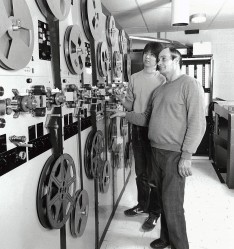Paving the way for Australian Stories
Forty years ago the South Australian Film Corporation was born triggering a film renaissance and forging a path for the establishment of state funding bodies around the country. Paul Chai looks at how the organisation came to be and how its influence is stil being felt today.
Where did the modern Australian film industry begin? Many would argue that it started in 1972 in an empty office in Adelaide that contained some scattered furniture and a solitary telephone. It was there that Gil Brealey, the founding chairman of the South Australian Film Corporation, was charged with kick-starting a local screen industry. Australia’s first state-based funding body was the initiative of then South Australian premier Don Dunstan 40 years ago this year, but in its early days it also had to act as a production house.
“That’s because there was nothing there to produce,” says Brealey.


